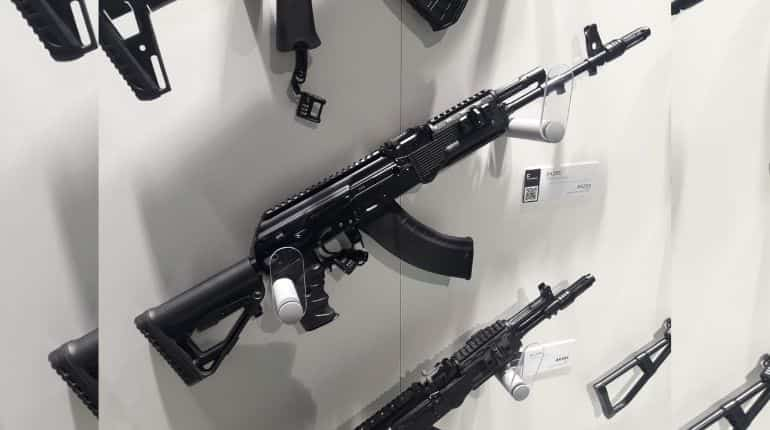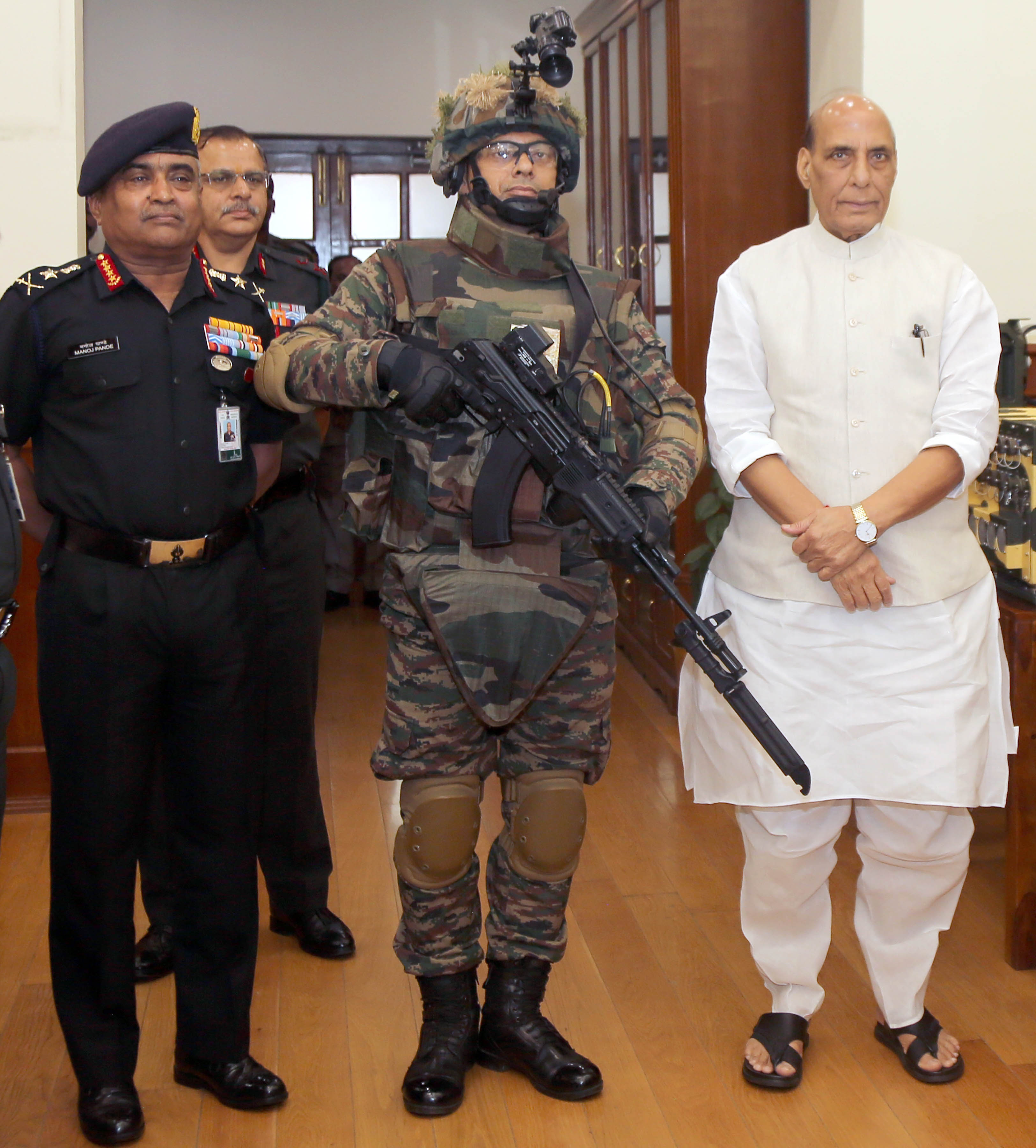Indo-Russian AK-203 Rifles production in India gets delayed
Indigenous production of the much awaited
AK-203 assault rifle under the joint venture between
India and Russia is expected to be delayed further due to unresolved issues between the two sides.
Sources confirmed to Financial Express Online that “There is a delay in the indigenous manufacturing of the AK-203 as there are issues related to Transfer of Technology (ToT) from Russia which has to be addressed first.”
“Secondly, due to the ongoing war between Russia and Ukraine, there has been a delay in the process of firming up the supply chain. Also there is lack of clarity on the supply chain,” said the source quoted above.
Adding, “Incidentally, there is no clarity on who will be making the barrel of the assault rifle.”
F-INSAS unveiled by defence minister
On Tuesday, defence minister
Rajnath Singh, had unveiled the concept of Future Infantry Soldier as a System (F-INSAS). The F-INSAS handed over showed an AK-203 assault rifle, which India had received off the shelf from Moscow, the soldier was wearing a helmet made by Kanpur based MKU, and the bullet proof jacket is from another company SMPP Pvt. Ltd.
How many rifles are required?
The Indian Army is waiting for 6.71 Around 6.71 lakh AK-203 7.62×39 mm rifles to be manufactured at this facility based at Korwa, UP. The two countries in 2019 had inked an Inter-Governmental Agreement (IGA) under which a Joint Venture Indo-Russian Rifles Private Limited (IRRPL) was formed. Initially, it will include Russian components. There also in batches of 20,000-40,000, the percentage of indigenous content would be increased gradually from 5% to 100% with a plan to produce all AK-203 after the first 1.2L with 100% indigenisation.
Upgrade of the existing AK-47
Financial Express Online earlier this year had reported that a Bengaluru based company SSS Defence had won a contract for upgradation of AK 47 rifles to the Indian Army’s Para Special Forces. The company has completed delivery of its Proprietary upgrade kits. Interestingly, for the first time a private sector company SSS Defence replaced an incumbent Israeli supplier – FAB Defence.
Due to the ongoing Russia-Ukraine war the company, according to sources the company is expected to receive a larger contract to upgrade more Kalashnikov rifles in service. The Special Forces of the Indian Army is presently using a mix of frontline assault weapons including — TAR-21s, M4A1s, among other rifles.
As has been reported earlier, sources have said “there is an acute shortage of raw material, components and end products, and this is causing delays in the indigenisation of various platforms in the Indian army.”
AK-203 for the Indian Army
The INSAS rifle which has been the mainstay of the armed forces has been plagued by limited upgrades, inefficiencies, and manufacturing quality concerns.
The Indian Army has had its woes with the INSAS rifle, an indigenous production, since its induction in 1994. One problem the Indian Army faces is the lack of a standardised carbine. The equipment has been unable to change with the evolution of the Army. The Army went from a traditional infantry force to a multifaceted organisation increasingly taking on urban assailants in a close quarter battle. Further, the Army revised its philosophy that earlier demanded the rifle to be able to incapacitate the target. Now, the Army adorns a stricter stance and seeks, per philosophy, an assault rifle capable of carrying out “shoot to kill” orders. Further, the existing infantry suffers losses when long-range, high-recoil rifles are used in tight spaces.
The AK-47, irrespective of the operator, has delivered in various environments, from deserts to high seas to the mountains. However, evolution is never-ending. And Kalashnikov released its next flagship rifle, the AK-203. It is slated to be a worldwide standard in the years to come.
More about AK-203
The Indian Army will receive a 300m range AK-203, although there are variants with a more excellent range. Even at such a long-range, the accuracy of the AK-203 is one of the best. It edges out the competition in the amount of Picatinny rails which allow a variety of add-ons such as sights. This standard mounting system lends greater modularity to the operators. It carries the reputable reliability that has been the hallmark of the Kalashnikov rifles like the AK-47 and the AK-74. It can perform in temperatures as low as -50 degrees Celsius in temperature tests. This makes it perfect for the mountainous warfare the Indian Army engages in with Pakistan and China.
In the opposite environment, the rifle also sustains dust storms and other builds of sand in desert environments. The tests were meant to emulate a sandstorm that could not deter the rifle’s reliability and accuracy. This is a handy weapon for even the long desert terrain we share with Pakistan.
The rifle tests included an emulation of tropical rain where the rifle was loaded and then exposed to the long downpour that turned the sand into silt. This means that not only will the wetter and tropical operations benefit, but with the combined ability to resist sand and silt, it will be viable for coastal forces to use this as well.
Beyond extreme reliability, it will use the 7.62×39 mm carbine with a collapsible stock that will enable close-quarter battles. This one rifle will be able to adapt to various tasks that the Indian Army has been undertaking. The Indian Army will be the first recipient of the AK-203 outside Russia. Currently, it is under limited use by the Russian Special Forces.
Initially, it will include Russian components. There also in batches of 20,000-40,000, the percentage of indigenous content would be increased gradually from 5% to 100% with a plan to produce all AK-203 after the first 1.2L with 100 percent indigenisation.





